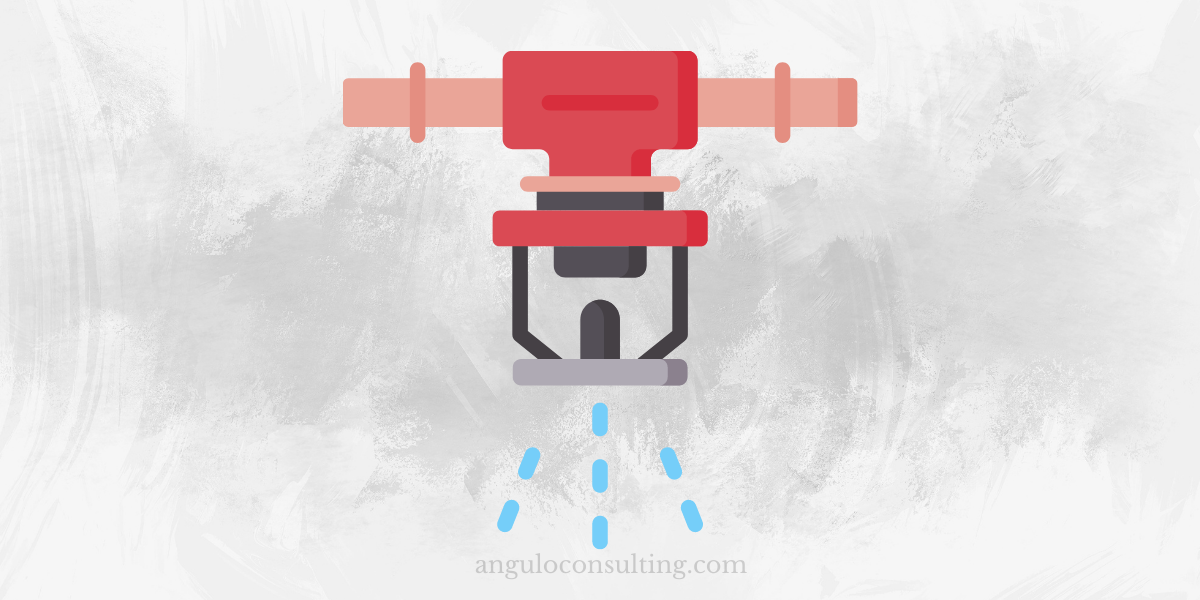
You will feel safer if your building has a sprinkler system. Your sprinkler system will respond immediately to any fire alarms and keep you safe until the firefighters arrive. This will only occur if you have been following sound fire sprinkler system maintenance. If systems aren’t maintained properly, they may not function as intended and could lead to problems that can cost you dearly. Let’s take a look into the maintenance of fire sprinkler systems and take steps to make sure you are doing everything that’s required.
How sprinklers work
Let’s first take a look at the actual operation of fire sprinklers. The movies show that every sprinkler on a building’s floor explodes at the first sign of fire. This covers the entire area with water.
However, this is not the way it works. Each sprinkler head will only activate when the surrounding area is sufficiently hot to melt the fusible links that block the flow of water. A fire might only activate one or two sprinkler heads, which work together to keep the flames contained until authorities arrive.
Why is this so important? We’ll explain in detail, but the bottom line is that each head requires its own maintenance. They don’t all work on the same activation system, so if one fails to function properly, the rest will pick up the pieces.
The Control Valve
The control valve is an essential part of any discussion about fire sprinkler system maintenance. This control valve is an important part of any fire sprinkler system and is easy to inspect. To allow water to flow, there is a valve that must be open. If the valve is closed, sprinklers won’t get water and will be ineffective in case of fire. Closed valves are the main cause of fire spread.
Good news: The valve inspection is the most straightforward component of fire sprinkler system maintenance. To make sure it is still in its open position, check it once per week.
Sometimes, the valve must be turned off in order to perform maintenance or repair on your system. If this happens, make sure that water is turned off only to the area being worked on and for only as long as absolutely necessary. You shouldn’t take unnecessary risks.
Inspection of Sprinklers
As we mentioned, the valve must be turned off when you inspect sprinklers. As a visual reminder, it’s a good idea for anyone who comes by to see the valve to turn it back on.
Notify the authorities that you are conducting maintenance on your fire sprinkler system. In case your alarm company needs to send out your system for maintenance or repairs, they should also be notified. It is also a good idea to inform your insurance company. This is sometimes mandatory if you need to keep your coverage by maintaining a regular fire sprinkler system inspection.
As we have said, limit the number of sprinklers that you inspect and let the rest run as usual. For the duration of your inspection, you should make sure to keep any ignition sources away from the area.
Check NFPA 25, Standard for Inspection, Testing, and Maintenance of Water-Based Fire Protection Systems, to determine how often sprinklers should be maintained. You may need to have a certified contractor handle your testing and inspections, depending on where you live.
General Understanding
No matter how strict the rules are set by your insurance company or local authorities regarding the maintenance of your fire sprinkler system, ensure that your staff is familiar with the system. This should include:
*Where is the valve located and how does it looks when it’s closed and open
*What a sprinkler looks and does when there’s something wrong
*Ensure sprinklers do not become blocked
Although it doesn’t have to be difficult, maintaining your fire sprinklers is important. These simple steps could save lives.
USAFP has been a leader in fire sprinkler system maintenance for more than 25 years. They are now dedicated to promoting affordable fire safety at home and work tirelessly for businesses.